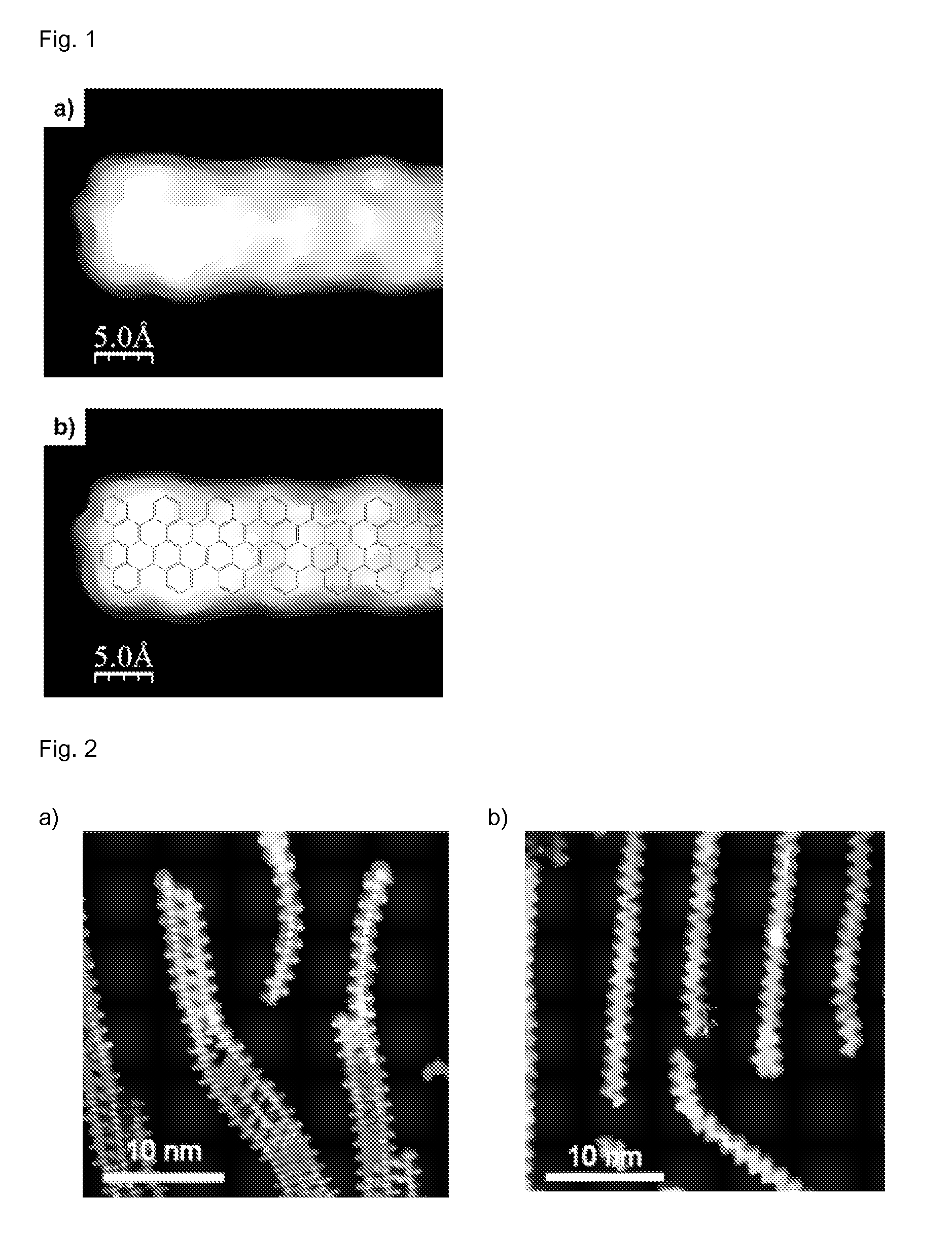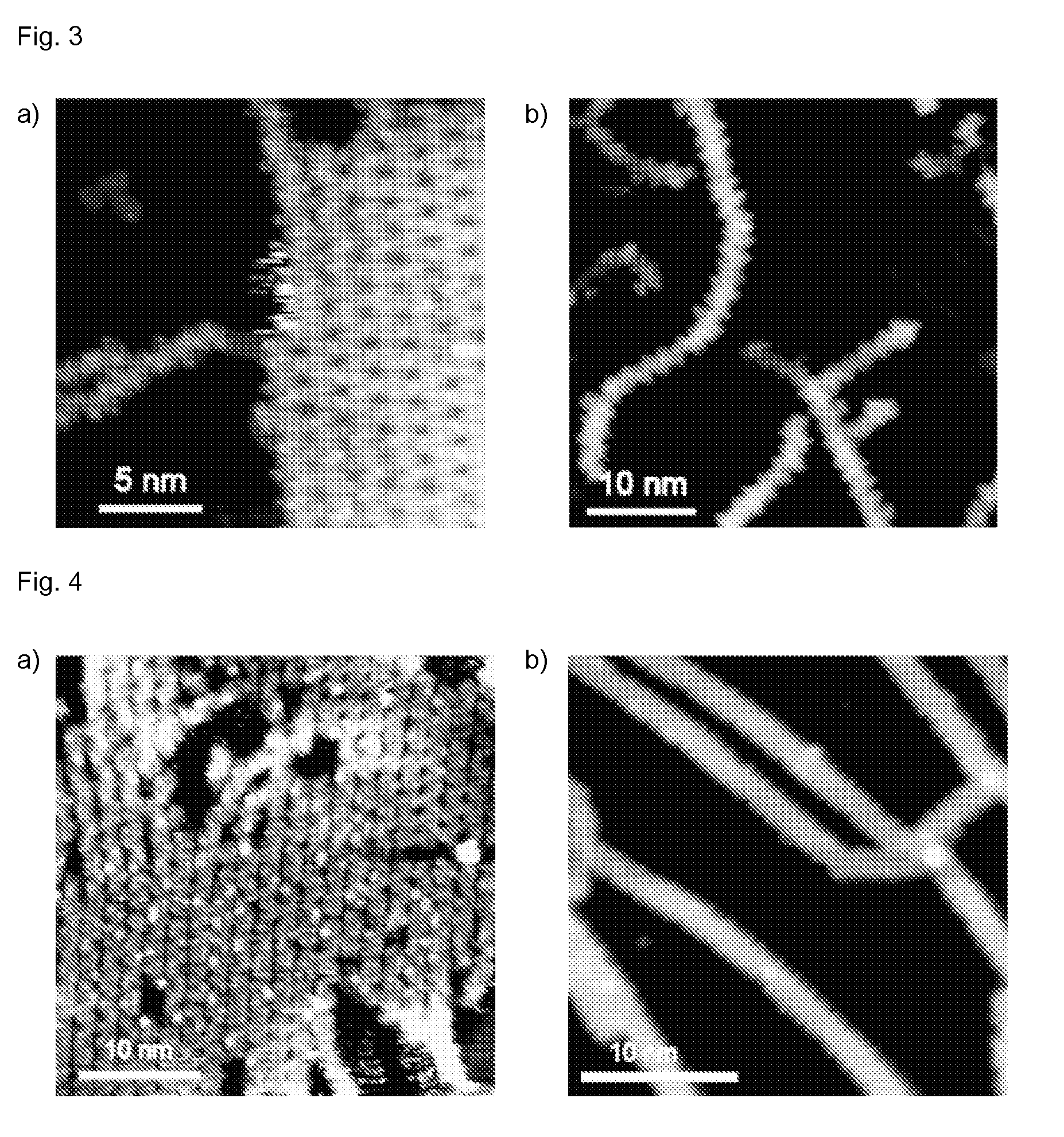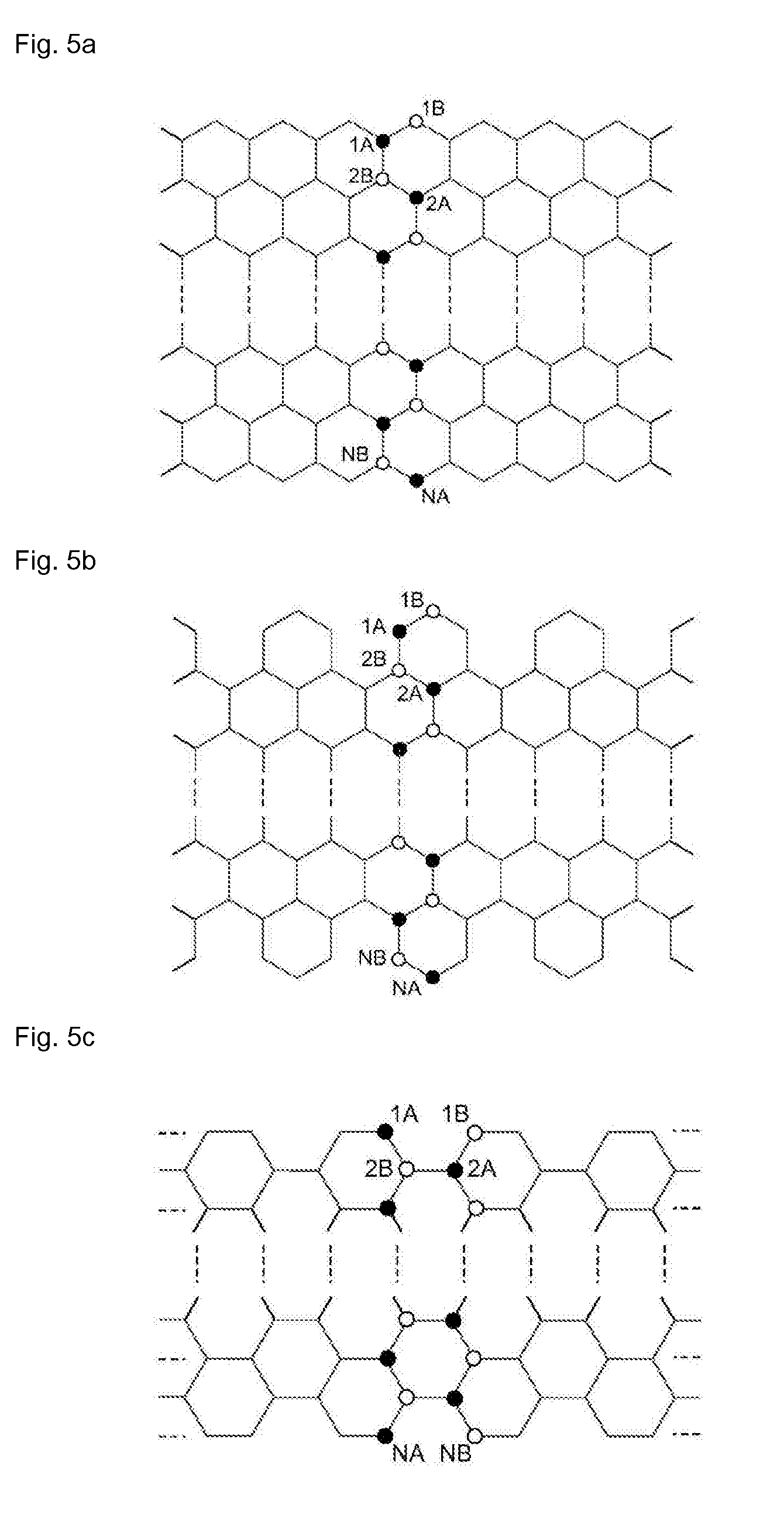Graphene nanoribbons with controlled zig-zag edge and cove edge configuration
a graphene nanoribbon and configuration technology, applied in the direction of graphene nanoribbons, organic chemistry, graphene, etc., can solve the problems of nanowires as template not suitable for ribbons narrower than 5-10 nm, and the absence of electronic band gaps
- Summary
- Abstract
- Description
- Claims
- Application Information
AI Technical Summary
Benefits of technology
Problems solved by technology
Method used
Image
Examples
examples
1. Synthesis Scheme of Monomer 1 (Monomer Structure V)
[0148]
7-Bromo-2-Naphthol (101)
[0149]To a stirring suspension of Triphenyl phosphine (31.5 g) in Acetonitrile (50 mL) in a 250 mL-Schlenk-flask was added carefully Bromine (6.2 mL) at 0° C. with a syringe over 30 min. The yellow solution was warmed to room temperature and 2,7-Dihydroxynaphthalene (16 g) was added in one portion. The reaction was refluxed at 70° C. for one hour. After cooling to room temperature, the solvent was removed under reduced pressure. The reaction flask was connected to a gas-washing bottle filled with a concentrated sodium hydroxide solution. The flask was heated to 250° C. for two hours and the black residue dissolved in 100 mL Dichloromethane and purified via column chromatography (DCM:Pentan 1:1 to pure DCM). Product 101 was received as a beige powder (14.7 g, 66%)
[0150]DC: Dichloromethane:Pentane, 1:1, Rf=0.2
[0151]1H-NMR: ∂ (300 MHz, CDCl3)=7.76 (d, 1H), 7.63 (d, 1H), 7.54 (d, 1H), 7.32 (dd, 1H), 7.03...
PUM
 Login to View More
Login to View More Abstract
Description
Claims
Application Information
 Login to View More
Login to View More - R&D
- Intellectual Property
- Life Sciences
- Materials
- Tech Scout
- Unparalleled Data Quality
- Higher Quality Content
- 60% Fewer Hallucinations
Browse by: Latest US Patents, China's latest patents, Technical Efficacy Thesaurus, Application Domain, Technology Topic, Popular Technical Reports.
© 2025 PatSnap. All rights reserved.Legal|Privacy policy|Modern Slavery Act Transparency Statement|Sitemap|About US| Contact US: help@patsnap.com



